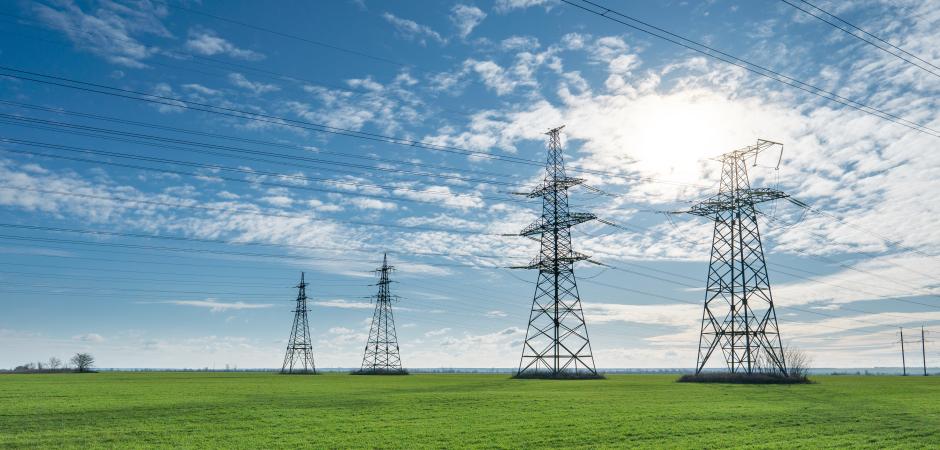
The low voltage network does not cover all the needs of some companies, such as power plants. The power they need and the infrastructure on which they must rely to provide service to thousands of people in an interrupted manner requires other solutions.
When we tackle these types of projects, at Sumcab we develop and manufacture the appropriate medium voltage cables and conductors to meet the needs of each customer.
Obviously, there is no single type of medium voltage cables, just as there is no single application for which we use them. Therefore, we personalise each project to the maximum so that it adapts to each customer’s every need.
Regarding medium voltage work there are nominal voltages from 1 kV to 36 kV, so there is a wide range to work on. Furthermore, due to the Spanish Royal Decree 223/2008, they are treated the same as high voltage installations in terms of safety measures. Therefore, it is always important to have specialised professionals, with experience and resources to be able to tackle these projects.
Below we identify some of the different uses given to medium voltage cables, depending on the specific needs of each installation.
Medium voltage cables for projects involving high levels of electrical conductivity
Depending on the project we are working on, medium voltage cables that offer high electrical conductivity may be required. Therefore, in addition to the performance of the cable in question, we need it to be made from the appropriate materials.
In these cases, copper is still today the most recommended solution. It is one of the metals with the greatest capacity for allowing electrical current to flow through it, which is why its conductivity is higher than that of many other metals.
This high electrical transmission enables the use of thinner conductors, although they carry the same power. Conductivity offers very interesting benefits in terms of the transport of the material and its installation.
However, copper has some disadvantages. It is a heavier metal than other alternatives and its cost is also higher. In installations that cover very large areas this implies a greater economic investment, for example if we have to install a greater number of supports.
Medium voltage cables for installations in large areas
Given the cost that copper can entail as a material for medium voltage cables, in those installations in which we have to cover large areas, aluminium becomes the most favourable option.
It is true that a medium voltage cable made of aluminium offers lower electrical conductivity than one made of copper, even 60% in comparison. But it also weighs much less, a third of that of copper.
Therefore, we can use enough aluminium for long distance installations and obtain the necessary power, in an installation that will be easier to carry out and, above all, more economical.
Despite all its benefits, aluminium also has disadvantages, in addition to its lower electrical conductivity. For this reason, solutions must always be customised for each project. It should be borne in mind that this metal has more pronounced cycles of expansion and contraction than copper, so a completely safe installation is essential in which any risk of fire is eliminated.
Projects with medium voltage cables with different insulation
Sometimes the electrical conductivity or the extension of the installation is not the most important factor in a medium voltage cable installation. There are projects in which insulation is a determining factor when choosing the most appropriate solution.
The insulation of the conductor is an important condition in these cables because its main function is to withstand the electric field inside.
Currently there is a wide variety of insulation that we can use in medium voltage cables, however there are 3 types that are among the most prominent.
XLPE Insulated Medium Voltage Cables
XLPE is cross-linked polyethylene, the most similar derivative to polyethylene that we can use. The fact that it is cross-linked enables it to offer great stability even in the face of temperature changes.
Therefore, with a medium voltage cable and XLPE insulation, there are no changes in its mechanical properties, even if it is subjected to high temperatures.
To this advantage, which is essential in some installations, it must also be added that it offers great flexibility and even greater resistance to impact than is possible with standard polyethylene.
It is true that XLPE is more rigid than other insulation options, such as the ones detailed below, and is therefore more difficult to handle. However, it is also much more affordable economically, which is why in some projects it is presented as the solution that offers the best value for money.
EPR Insulated Medium Voltage Cables
EPR consists of a cross-linked rubber, also known as ethylene propylene. It offers greater flexibility and thermal resistance than XLPE insulation for medium voltage cables.
It is especially useful in those installations where we need to manufacture cables of smaller section, capable of transmitting a specific power. In addition, it offers high resistance to oxidation, this factor is very important for some projects.
HEPR coated medium voltage cables
Derived directly from EPR, we can obtain HEPR or high modulus ethylene propylene. It is a material with even greater mechanical characteristics with respect to breaking load, modulus of elasticity and other features that do not offer the above options.
At Sumcab, we work with a wide range of medium voltage cable types, in order to adapt to the needs of each project. Request a quote and we will find the ideal solution for your installation.

